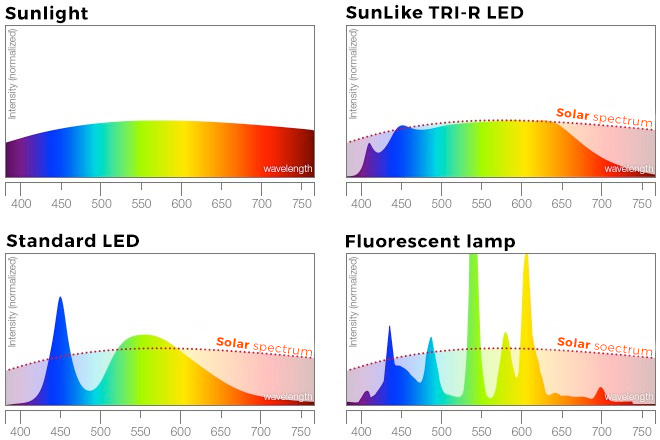Not quite sure what you mean here — and @CalMeacham can probably explain this better — but CRI is a number from 0 to 100 that can be applied to any bulb type, and generally higher is better (more able to accurately show colors).
A regular cheap florescent (or a cheap LED, for that matter) might be in the 50s or 60s, which would be a huge difference vs the 90+ CRI “premium” lights. You can get high-CRI lights in both florescent and LED. An incandescent would be 100 or very close to it (it’s almost a blackbody).
It is measuring the similarity of a light’s output spectrum vs that of daylight: Lumistrips The Intricacies of Color Rendering Index: A Comprehensive Guide to CRI and Lighting Technologies
For example:

A typical florescent has a bunch of spikes in odd frequency ranges, giving them that unearthly glow many of us will remember from the old days. There are higher-quality ones used in the film industry.
LEDs were similarly bad at first, especially a decade or two ago. It wasn’t until recently (last 6-7 years, I think?) that high-CRI LEDs became both common and cheap enough to be the "default’ option at Costco. You can still find crappier bulbs at other retailers like Ace Hardware, Home Depot, Safeway, etc.
There may also be non-CRI tests that show even more colors, and some “full-spectrum” bulbs can do better there:

It is entirely possible that even among two 90+ CRI bulbs, one of them has a better “strong red” performance, like your bulbs for example, and that your eyes can detect that difference even if the CRI test doesn’t cover it. It’s just harder to quantify.
Some “full spectrum” bulbs are just marketing fluff that don’t do anything special beyond having an above-average-ish CRI (if even that). It’s not a legally protected term, so anyone can call anything full-spectrum.
But in the specific case of Waveform Lighting, they actually do perform and publish lab test results, so it’s very possible that their bulbs are above and beyond what a high-CRI bulb would get you — I just don’t know if it’s noticeable for an average person, or at least noticeable enough to justify a more than sixfold price difference.
Certainly if you compare their bulb to a shitty shop LED with no indicated CRI, it should appear much better. I don’t know how it compares to a 90+ CRI Feit with no special boosting of “strong red” . You’d have to look at them side-by-side with eyes better than mine, or use some lab equipment.





